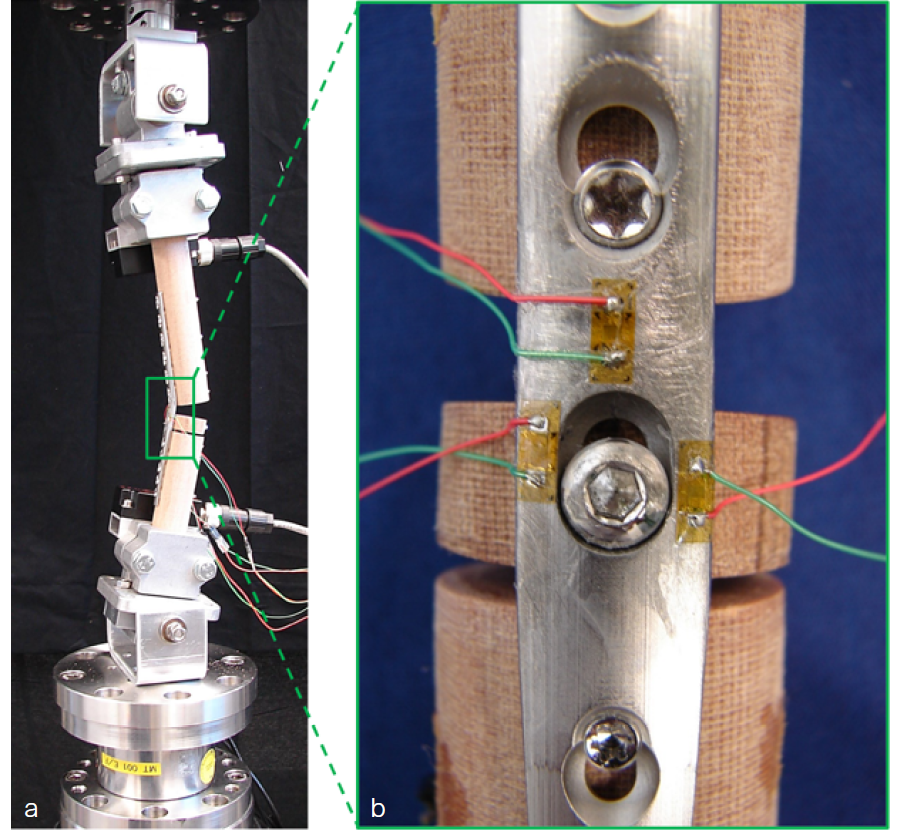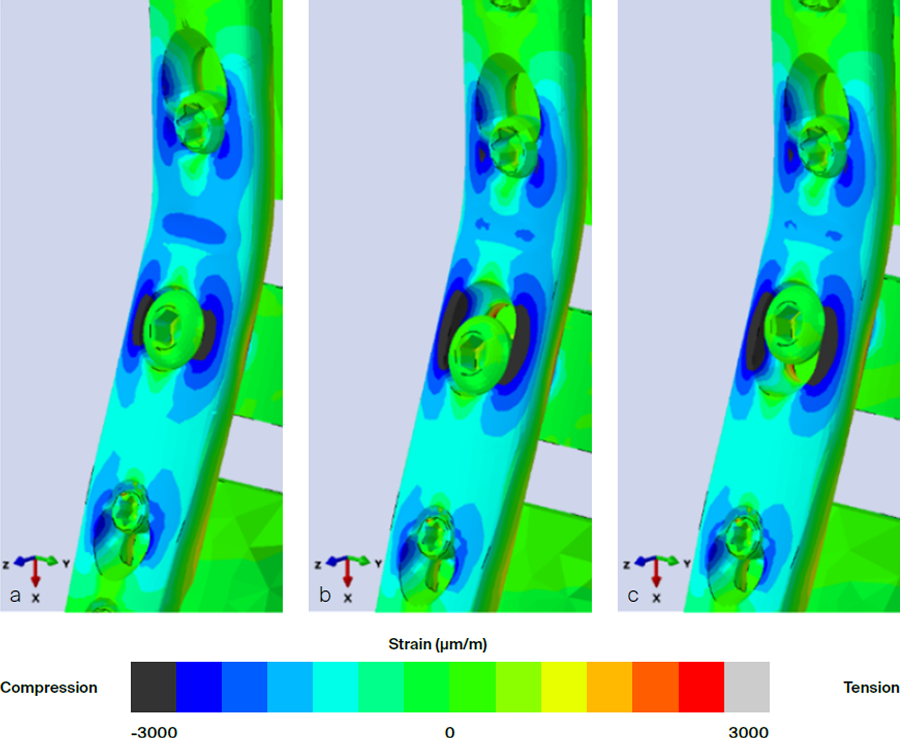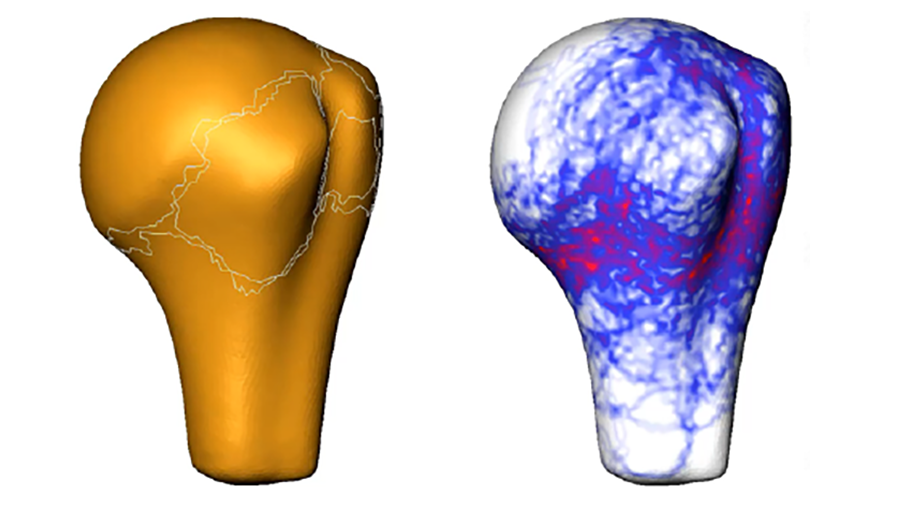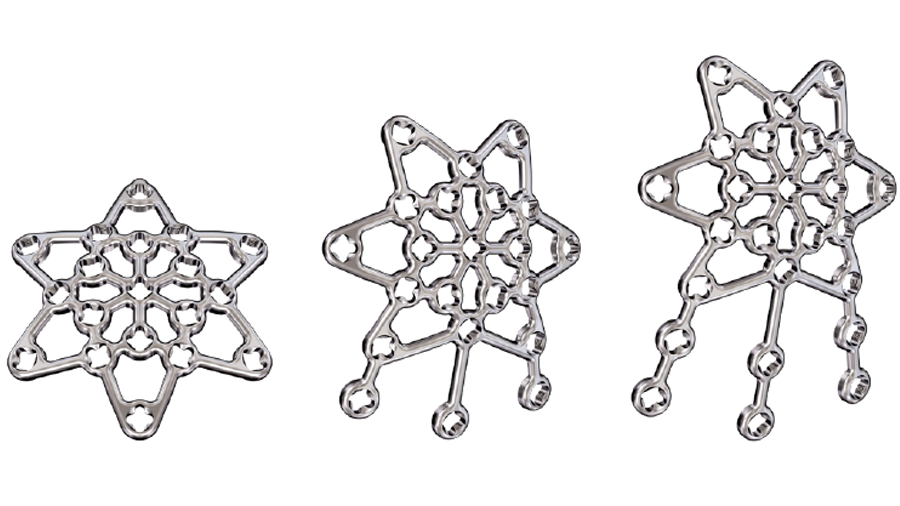
ARI
Mechanical evaluation of two hybrid locking plate designs for canine pancarpal arthrodesis
Introduction
Pancarpal arthrodesis is a well-established procedure for treatment of canine carpal disorders including hyperextension injuries, severe fractures or luxations, end-stage osteoarthritis, and selected neurological deficits.
Two new hybrid locking pancarpal arthrodesis plates have recently been developed featuring a tapered profile and incorporating either a round (RH) or oval (OH) radiocarpal hole (Fig 1). The OH design was considered to facilitate both screw placement in the radiocarpal bone and plate positioning, but perhaps at the expense of mechanical strength. So far, neither mechanical comparisons between these plate designs have been performed nor the effect of an oval radiocarpal hole on the plate structural parameters investigated.
The aim of this project was to compare the mechanical behavior of the two hybrid locking pancarpal arthrodesis plates under quasi-static and fatigue loading.
Materials and Methods
Plates with RH or OH design were prebent at 20° and assigned to three techniques for fixation of canine forelimb models with simulated radius, radiocarpal and third metacarpal bones. The OH plates were instrumented with the radiocarpal screw inserted either most proximally (OH-P) or most distally (OH-D) in the radiocarpal hole. Initially, all specimens were axially loaded to 300 N over 10 ramped cycles at 0.5 Hz (n = 6) and plate surface strains were measured with strain gauges placed at the areas of highest deformations as predicted by finite element analysis (Fig 2). The specimens were then subjected to cyclic axial loading at 8 Hz and 320 N peak load until failure to assess their fatigue life and mode of failure.
Results
The finite element analysis predicted highest strains adjacent to the radiocarpal hole and the plate bending point (Fig 3). Experimentally, peak radiocarpal hole strains were not influenced by the OH screw position (P = .550) but were significantly higher compared with the RH design (P < .001). Peak strains at the bending point were significantly lower for both OH-P and OH-D versus RH configurations (P ≤ .006). The OH plates demonstrated highest peak strains next to the radiocarpal hole and were associated with more heterogenous plate surface strain distribution. Cycles to failure were higher for RH plate fixation versus both OH-P and OH-D plate configurations, reaching significance versus OH-D (P = .030). No significant difference was detected between the OH-P and OH-D configurations (P = .090).
Conclusion
The radiocarpal oval hole design was associated with increased plate strains and lower cycles to failure compared with the round hole design. However, it can provide surgeons with more options regarding plate and screw positioning in dogs of smaller size.
You might also be interested in
Statistical analysis of humeral fractures
Allows identification of zones with highest fracture probability.
Helical plating
Provides well-balanced load sharing in laterally plated femoral defect fractures.






